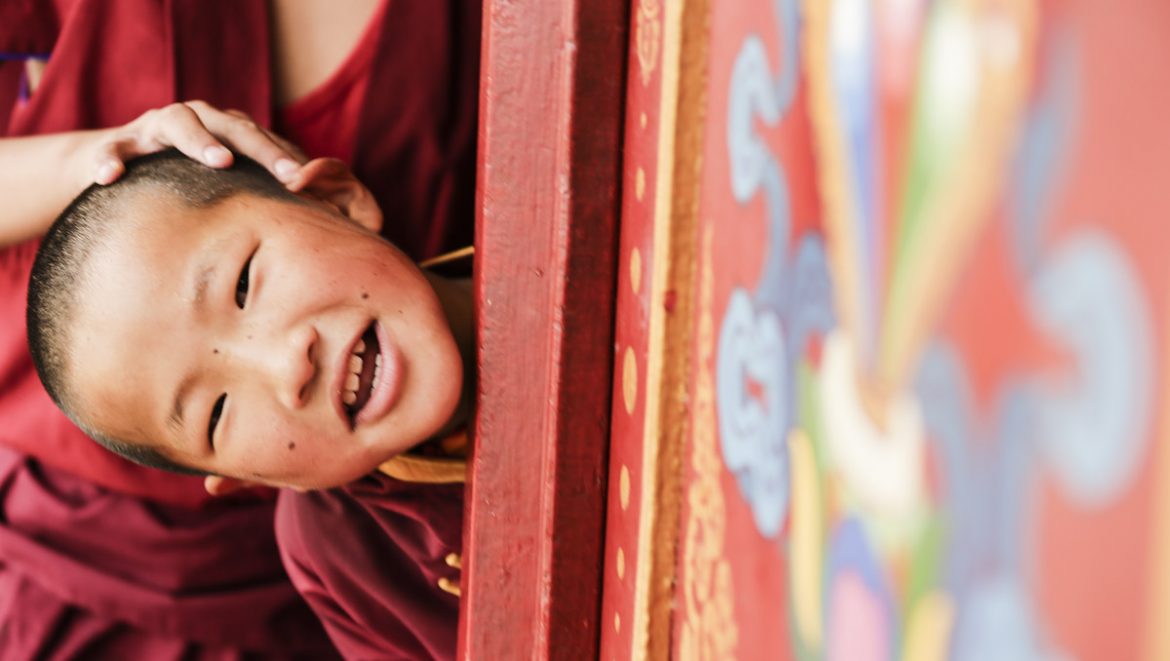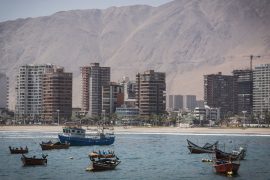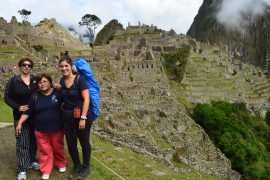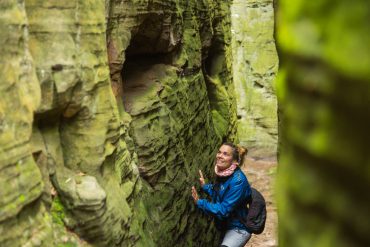We visited several Buddhist temples throughout Mongolia. In some of the monasteries, we saw many child monks, with ages from 9 to 13 years old. At the time we didn’t really understand what being a child monk meant, besides the fact that they wore orange-reddish monks’ robes (kashayas), had razored heads and learnt the sacred books in the shrines.

Later, we were lucky to meet a Mongolian who could shed some light on the subject: What does it imply to become a child monk? First of all, it is important to understand that in Buddhism, any monk can revoke his vows whenever he wishes, without it involving any kind of rupture from the religious community or any disgrace in society, in general. Actually, it is even common that monks ordain and commit for a defined period in their lives only.
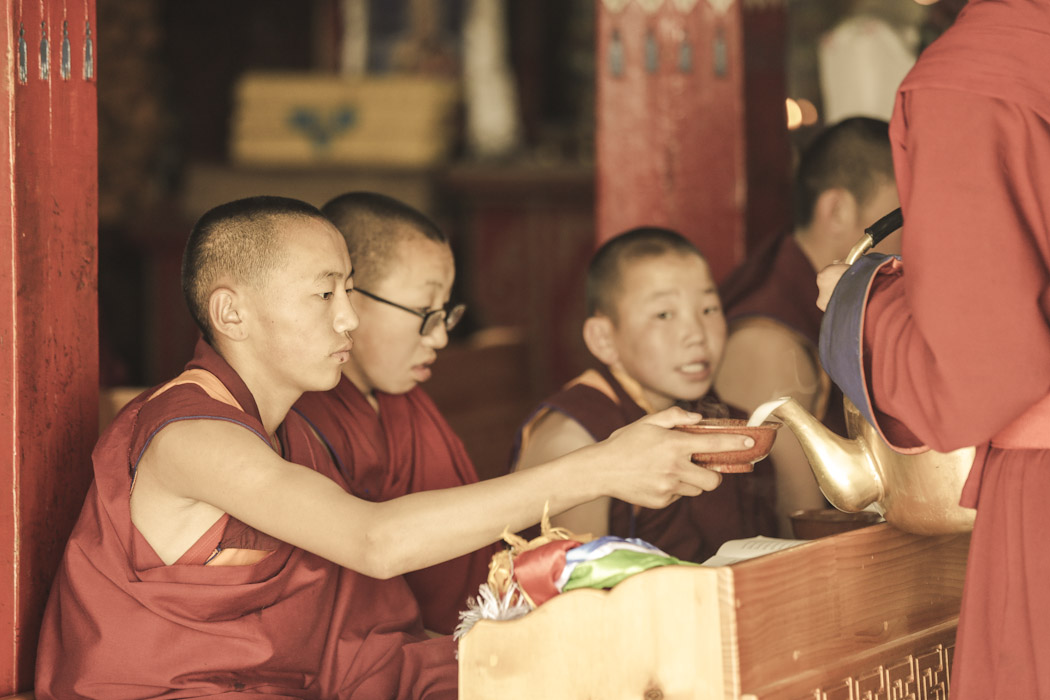
With this in mind, it is easier to understand why children can become novice monks at such an early age. This is not necessarily a commitment for life. Actually, many parents send their kids to Buddhist monasteries for a couple of weeks or months only, so that they can have a good experience. We learnt that it is not unusual that kids go to monasteries during the summer holidays, as a way for parents to keep their kids busy during summer time.
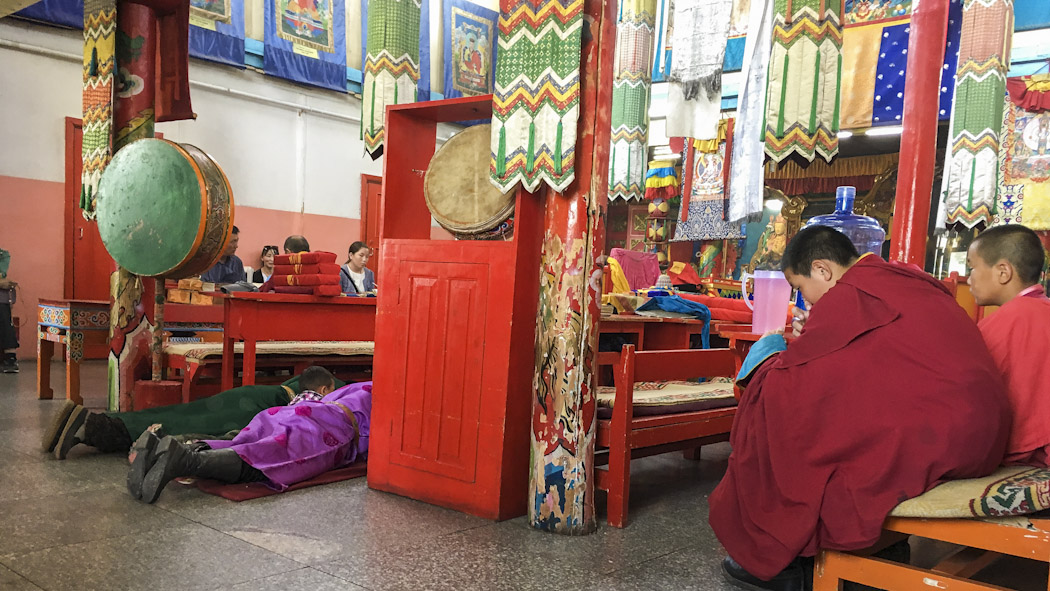
Reasons for children to enter Buddhist Monasteries
Of course, this is only one reason, but there is more to this than just getting some time-off your kid. So in all, these are some of the reasons why children are initiated into Buddhism:
- Be it for a temporary period or for a longer time, the main reason why children enter the monastery is for their personal growth and development. There they will learn about discipline, they will study sacred texts and learn about meditation, they will participate in daily tasks for the good functioning of the monastery and they will be part of a team. It seems that most kids like it, especially because they get to make new friends there. It works as a kind of western version of scouts.
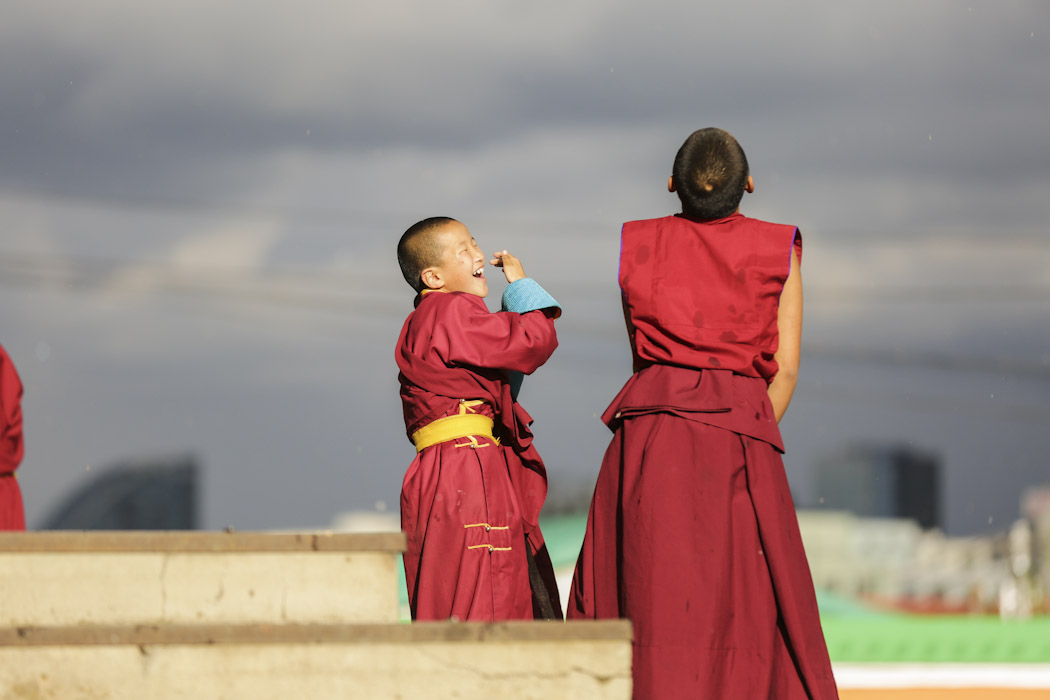
- Children who stay long terms at monasteries are more likely to come from poor families, who see the monastery as a way to offer education (and food) to their children. In these cases, Buddhist life becomes a way to escape almost guaranteed poverty to children who would otherwise have little chances to escape the hard life of a herder. Monasteries also fulfill the role often delegated to orphanages welcoming orphans or abandoned children.
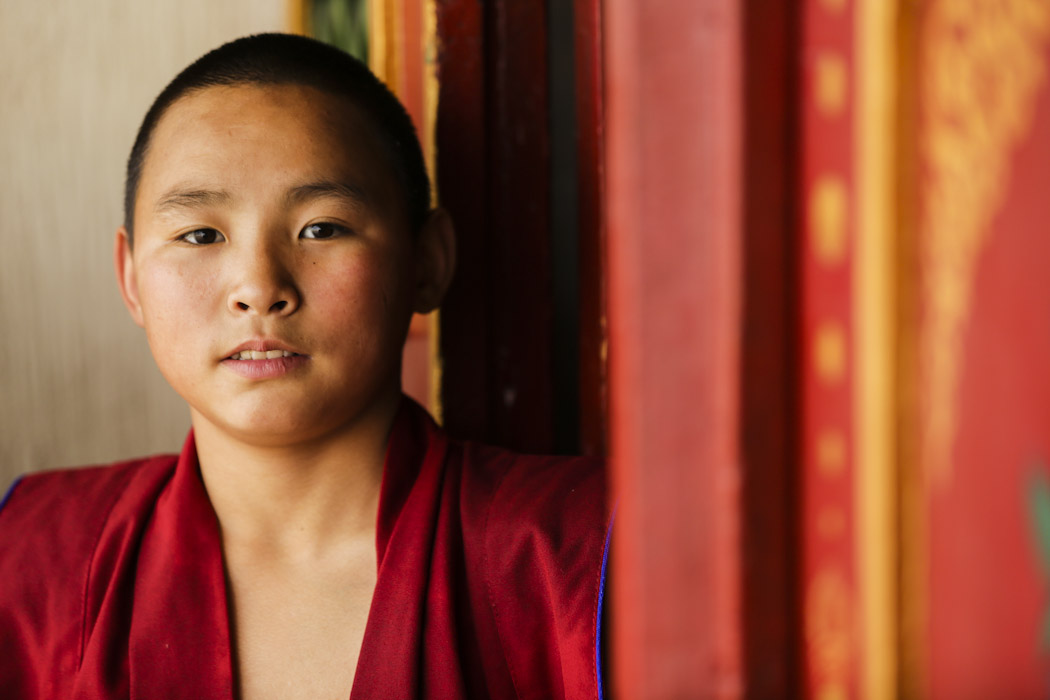
- And, probably, there are cases of children wishing to ordain out of a genuine wish to follow a spiritual call. In these cases, they will stay in the monastery and will pursue an education and a ‘career’ as a lama. Consecrating an entire life to the monastery comes with the advantage of achieving an important role (and respect) in the clerical hierarchy and in society in general.
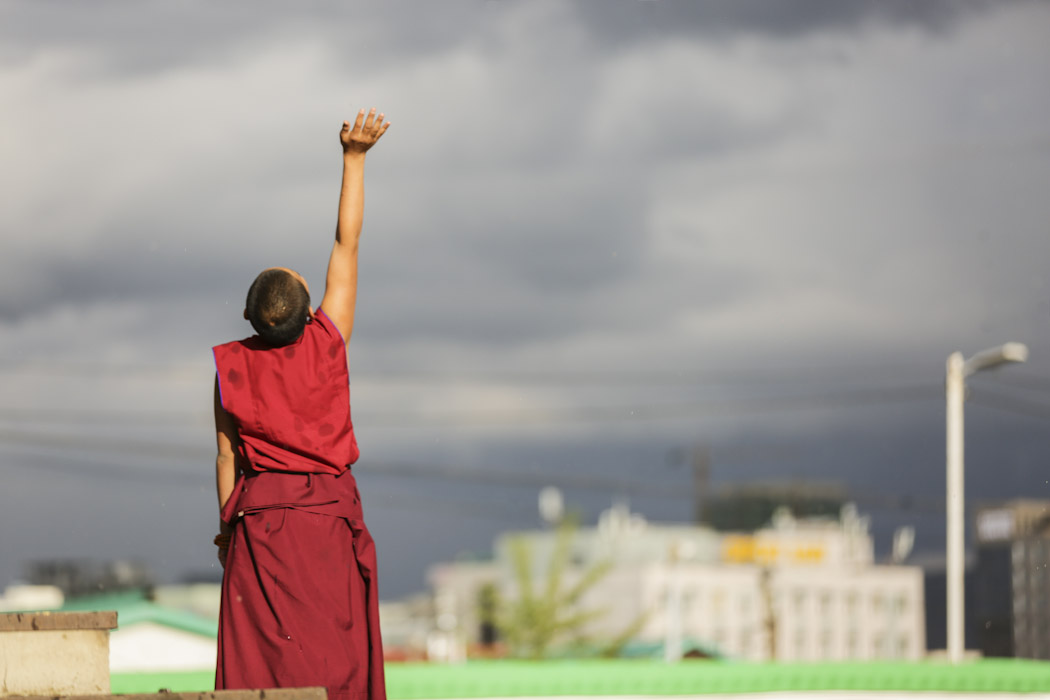
Whichever the reason, our personal feeling was that these boys were enjoying their time. The photos were taken in the monastery complex of Gandantegchinlen in Ulaanbaatar, when a summer storm was approaching. Suddenly, the heavy cloud let all its rain fall, and the monk kids came outside to play in the rain. Were it not for the red robes and the razored heads, they would pass for ordinary kids, really…
Brief History of Buddhism in Mongolia
- Before Buddhism, Mongols followed a folk religion based on shamanic traditions (In Mongolian Culture, Genghis Khan is considered to be the embodiment of one of the Mongol shamanic Gods).
- During the Mongol Empire, in the 13th century, several emperors were converted to Tibetan Buddhism, but after the fall of the Empire, Mongols returned to a form of shamanism that had taken many Buddhist influences.
- In the 16th century, a Mongol military leader – Altan Khan – invited the head of Tibetan Buddhism to form an alliance. It was Altan Khan who came up with the nomination ‘Dalai Lama’ (Dalai means ‘Ocean’ in Mongol, and lama means ‘Wisdom’ in Tibetan), and this title has been held ever since by Tibetan Buddhists (it was even given post-mortem to the previous Dalai Lamas).
- Buddhism flourished then in Mongolia, with Buddhist monks taking over the functions previously performed by the shamans, as healers and diviners. The population willingly paid for these services, contributing to the growth and wealth of Mongolian Buddhism. At the time, Buddhist monks controlled 20% of the country’s wealth. By the 1920s, one-third of the male population of Mongolia were monks (around 110,000). At the time Mongolia had 583 monasteries and temples and many of its monks lived outside monasteries. Cities grew around monasteries and not the other way around.
- In the 1930s, when communist revolutionaries took power, all religions were suppressed, monasteries dissolved and destroyed and Buddhist monks persecuted and executed.
- With the overthrow of communism in 1990, there has been a revival of Buddhism and now Mongolia counts about 200 temples and around 500 monks (though we couldn’t verify this number in any official source). According to the latest census (2010), the majority of Mongolians is Buddhist (53%) while the second biggest group identifies as not being religious (38%). Hardly 3% remain followers of the Mongol shamanic tradition.


